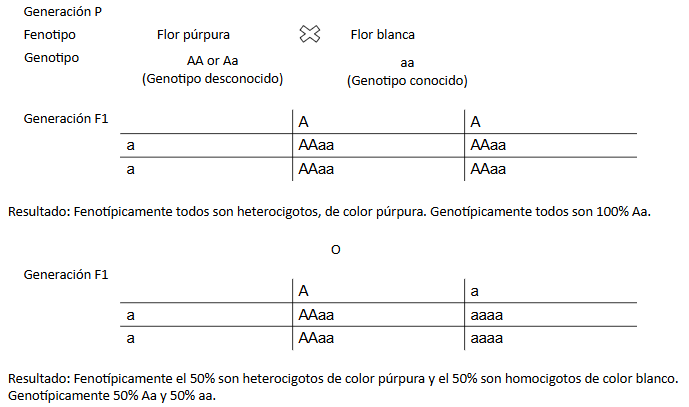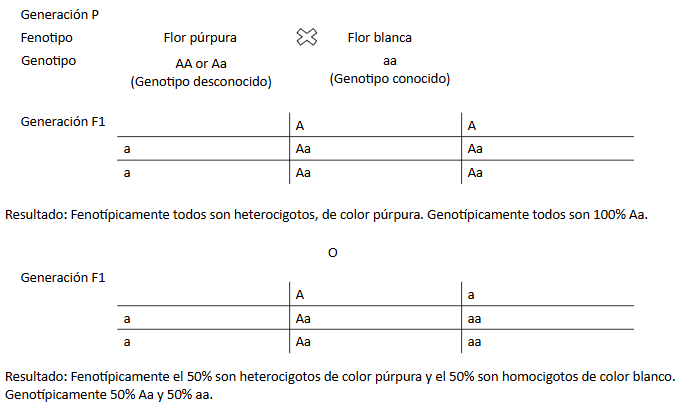PúrpuraDr. Castro: ¡Correcto! Según vuestros hallazgos, el fenotipo púrpura es dominante porque aparece en la mayoría de la descendencia. Aunque Mendel vio todas las flores púrpuras en la generación F₁, todavía necesitaba averiguar si esas plantas púrpuras eran homocigóticas o heterocigóticas. Tú: Entonces, si todas las flores F₁ son púrpuras, podrían ser AA o Aa, ¿verdad? Mendel no lo sabría solo con mirarlas. Dr. Castro: Exacto. Por eso diseñó experimentos usando cuadros de Punnett como herramienta predictiva. Él ya sabía que la flor blanca de guisante era homocigótica recesiva, o “aa”. El progenitor púrpura podría haber sido homocigótico dominante (AA) o heterocigótico (Aa). [Otro estudiante acerca una tabla para la demostración.] Alicia: Voy a montar rápidamente el cuadro de Punnett aquí, tal como lo haría Mendel, para explorar los posibles genotipos. Luego podremos ver cómo cada combinación conduce a proporciones específicas en la descendencia. Dr. Castro: Buena idea. Así fue como Mendel sentó las bases para entender los patrones de herencia. Vamos a trabajar ese cuadro paso a paso. Elige la ilustración correcta del cuadro de Punnett: Cuadro de Punnett 1:
Cuadro de Punnett 2: |
Map: CS10 - GENÉTICA MENDELIANA Y PROBLEMAS GENÉTICOS_ES (1024)
|
||
|
Review your pathway |

